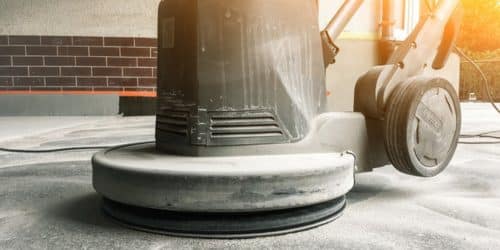Construction labor is fraught with dangers, ranging from falling materials to lethal machines. Fortunately, advancements in construction equipment technology have made job sites far safer than they were even a few years ago. There are several advanced devices available nowadays that make the process easier and less dangerous for workers. This post will look at 8 advanced pieces of construction equipment that you should know!
Understanding Construction Equipment
Any machine used to build or repair a structure is considered construction equipment. Moles can bore through sand, soil, and rock and are used for subterranean excavations. Roller compactors or road rollers compact concrete, soil, or asphalt. These are seen on construction sites, farms, and garbage dumps.
Using advanced construction equipment can increase the quality, efficiency, safety, sustainability, and cost-effectiveness of any building project.
Top 8 Advanced Construction Equipment That You Must Know
This section will go over some of the 8 advanced equipment utilized in home construction that you should know in order to complete the project successfully.
These machines have not only made the process faster and more efficient, but they have also enhanced worker safety on the job site. Without further ado, let’s get started with the 8 most advanced pieces of construction equipment you should know.
#1. Concrete Grinder
Under the floorboards or tiles, the concrete can be bumpy, uneven, or even coated or epoxied. As a result, putting another floor on top can be difficult. After the surface has been ground smooth, laying down any alternative flooring option is simple.
Preparing the floors before installing tiles or hardwood is the best way to ensure their longevity. It is critical that the floors be polished because the quality of the concrete will be seen.
Large floor installations almost always necessitate substantial floor preparation. As a result, a concrete grinder can make floor activities easier and faster.
There are two types of concrete floor grinders: planetary and rotary. The design and weight of the grinding discs are what distinguish them.
#2. Diamond Concrete Core Drill
You may have recently heard the term diamond core drilling. What distinguishes this from regular core drilling?
Using a hammering action without a diamond drill exposes operators to numerous hazards, including the possibility of unanticipated projectiles of cement, stone, or mineral being blasted out sideways from the drill site. Conventional drilling methods also put a lot of strain on the machinery, potentially causing it to break.
A diamond core drill enables more precise, faster, and efficient core drilling with no harm or vibrations to the surrounding area.
It is more efficient, less dirty, and has a lower risk of breaking or damaging neighbouring structures. This revolutionary technology allows for the drilling of holes of varying diameters in a variety of settings.
#3. Air-Powered Chainsaw
Compressed air chainsaws are used to make straight and plunging cuts in masonry, hardened concrete, and other hard, abrasive materials. They are lighter than gas-powered saws and require less maintenance. They are also non-toxic and can be used indoors.
A concrete chainsaw is a versatile instrument. These strong cutting tools are commonly utilized in industry and commerce by construction engineers, highway maintenance contractors, and others.
Compressed air-powered pneumatic chainsaws are difficult to beat when it comes to high-performance concrete chainsaws. When compared to gasoline- or hydraulic-powered concrete chainsaws, these saws are far more efficient and sturdy.
#4. Backhoes
If you work on a construction site, you already know that a backhoe is a necessary piece of equipment. But just what is a backhoe?
A backhoe is a piece of excavating equipment that consists of a digging bucket attached to the end of a two-part articulated arm. The arm is attached to a pivoting platform, which is then attached to the chassis of a tractor or other vehicle.
Backhoes are used for a variety of jobs, such as digging trenches, holes, or foundations, as well as loading trucks and cleaning debris. They can also be outfitted with attachments like breaker bars or augers to accomplish additional duties.
Whether you’re just starting out in construction or have been doing it for years, knowing how to operate a backhoe safely and efficiently is essential. We’ll provide you with some pointers on how to do precisely that in this article.
#5. Wheel loaders
A wheel loader is a piece of heavy equipment used in construction to scoop up, carry, and dump loose materials such as sand, gravel, demolition rubble, and other materials.
While wheel loaders come in a variety of shapes and sizes, they all have key characteristics. Wheel loaders, in particular, feature a huge bucket attached to the front of the machine that can be raised and lowered. The bucket is tiltable forward and backward thanks to hydraulic cylinders.
Wheel loaders are employed in a wide range of construction tasks. They can, for example, be used to load vehicles with loose material such as gravel or sand. They can also be used to clear construction debris and excavate ditches.
If you’re working on a construction job, you’re bound to come across a wheel loader at some point. It’s critical to understand how these machines work so you can make the most of their possibilities.
#6. Cranes
Cranes are vital components of every construction project since they are used to lift and move big goods. These Cranes exist in a variety of sizes and capabilities, and the type of crane chosen is determined by the size and type of construction project. Modern cranes are outfitted with GPS systems and other advanced technology, enabling precise and efficient material lifting and movement.
The following are some of the most prevalent types of cranes used in construction:
- Tower cranes: Tower cranes are tall, free-standing structures that can reach heights of 500 feet. During the construction of towering buildings, they are used to raise heavy materials such as concrete and steel beams.
- Mobile cranes: Mobile cranes are cranes that can be moved about a construction site and are mounted on trucks or trailers. They have an extendable and retractable boom and are used to carry big objects such as concrete blocks and steel beams.
- Crawler cranes: Crawler cranes are big tracked vehicles that can traverse through tough terrain. They have an extendable and retractable boom and are used to carry big objects such as concrete blocks and steel beams.
- Sky crane: A sky crane is a type of helicopter with a long cable attached to the underside. The cable’s opposite end is connected to a load, such as heavy construction equipment or an emergency medical stretcher. Sky cranes are used to hoist exceptionally huge goods or move them to inaccessible locations.
#7. Power Sander
Sanding is an important part of carpentry. Power sanding equipment smooths and moulds wood and other materials in preparation for painting and finishing. A belt sander is the most practical and largest sander for this purpose.
This sander comes with an electric motor, two cylinders, and sandpaper to help with wood trimming and polishing. It can also be used to smooth uneven surfaces, level objects, and shape them.
Another type of sander with a distinct sanding surface is the orbital sander. This circular sander revolves. It also contains a high-speed electric motor and a sanding disk that revolves in a circle, making it easier to reach edges and corners.
The orbital sander is used for a variety of activities that require only light sanding. It is also used as a primer before painting, refinishing, or sealing. Because the finishing surface is difficult without orbital sanders, they are also known as finish sanders.
#8. Automatic Threading Machine
Pipe threaders are essential instruments for cutting threads on pipe ends for both female and male attachments. It can be used in mining, plumbing, and a variety of other applications.
Using automatic threading machines ensures faultless outcomes in a variety of procedures, including welding and cutting. Steel pipe threading machines are, hence, the best option for a guaranteed output.
Automatic threading machines can also use the same thread to thread both ends of piping systems. These tools can also be used to build string designs for individual clients.
Threading machines are widely available from most pipe manufacturers and can help cut strings fast and easily.
How to Choose the Right Construction Equipment
Choosing the right construction equipment is essential for achieving efficiency, safety, quality, cost-effectiveness, and an overall understanding of your interior design and construction projects. With insights from an interior design course, you can gain the expertise to align construction equipment with precise project requirements and deliver satisfactory results to clients while minimizing risks and optimizing resources.
Selecting the right equipment involves a combination of careful planning, considering project requirements, sticking to the budget, and evaluating the specific needs of the job. Here’s a step-by-step guide to help you choose the right construction equipment.
Step 1: Assess Project Requirements
Clearly define the scope of your construction project, including the type of work involved, the materials to be used, and the expected timeline. Identify the specific tasks that require equipment, such as excavation, lifting, compacting, grading, etc.
Step 2: Consider the size and duration of your project.
Consider the size and duration of your project. The size and duration of your project will have a big impact on the type of construction equipment you need. For example, a small residential project will require different equipment than a large commercial project.
Step 3: Factor in the job site conditions.
Consider your job site’s terrain and weather conditions. The job site conditions will also affect the type of construction equipment you need. For example, you will need different equipment for working in mud than you would for working on a concrete slab.
Step 4: Budget Considerations
Determine your budget for equipment rental or purchase, considering both upfront costs and potential ongoing maintenance expenses. You can compare the costs of renting versus buying, factoring in the frequency of equipment use and the duration of the project for choosing the most suitable option.
Step 5: Ensure the availability of parts and services
Consider the manufacturer’s warranty and service support. It’s important to make sure that you can get parts and services for your construction equipment if something goes wrong. This can contribute to safer and more efficient usage.
Step 6: Get quotes from multiple vendors
Once you have a good understanding of your needs, it’s time to start getting quotes from different vendors. This will help you compare prices and find the best deal.
Step 7: Do your research
Read reviews and talk to other construction professionals to get their recommendations. This will help you make an informed decision about the right construction equipment for your project.
What is Advanced Construction Equipment?
Hauling and earthmoving equipment Equipment for blasting and drilling Driving piles equipment Pumping equipment (both for water and concrete), air compressor applications Techniques for dewatering trenches and tunnels.
What is Equipment in Construction?
Construction equipment refers to the equipment, machinery, buildings, scaffolding, materials, tools, supplies, and systems owned, rented, or leased by the contractor or its Subcontractors or Sub-subcontractors but not intended for inclusion into the Project.
What is Heavy-duty Equipment?
Heavy equipment is machinery capable of doing heavy-duty tasks. The equipment itself comes in a variety of sizes. Large works, such as earthwork, are carried out by heavy equipment.
What Equipment is Needed for Construction Work?
On every construction site, we see the following vital construction equipment:
- A hammer with nails.
- Drill with a powerful motor.
- Screwdrivers.
- Saws.
- Level and a tape measure
- Electrical Examiner.
What are the Examples of Major Equipment?
Large mechanical and electrical machinery or apparatus, including specifically electric and steam-driven chillers, steam condensers, boilers, cooling towers, steam/hot water converters, deaerators, chilled and condenser water pump systems, and related electrical switchboards and motor control, is referred to as major equipment.
What are the Types of Equipment?
Types of equipment include:
- Agricultural equipment.
- Audio equipment.
- Camping equipment.
- Capital equipment.
- Cricket equipment.
- Diving equipment.
- Electrical equipment.
What is the Nickname for an Excavator?
The most commonly used abbreviation is “ex”. There are also diggers, crawlers, track hoes, and mechanical shovels, to name a few. Because most excavators run on tracks, the track hoe nicknames are derived from the analogy to the backhoe.
What are Site Equipments?
Site Equipment refers to the physical assets (excluding property, shelters, containers, or other types of equipment) located in a certain Infrastructure Item and used for the usage, operation, exploration, or management of that Infrastructure Item.
What is the Hardest Heavy Equipment to Operate?
To accomplish the work efficiently and accurately, you must have a deep understanding of the equipment as well as a specific skill set. Motor graders are widely regarded as the most difficult trucks to run of all heavy equipment.
What are the 4 Main Types of Construction?
Residential construction, commercial construction, industrial construction, and infrastructure construction are the four major categories of construction.
What is Equipment vs Machinery in Construction?
A machine is a mechanical power apparatus that consists of multiple pieces, each with a specific function, that work together to complete a certain activity. Any necessary object required for a specific purpose is referred to as equipment. They are assembled components. They are a collection of tools.
Conclusion
Finally, the construction sector has seen considerable transformations throughout the years, including the advent of advanced construction equipment. These machines have not only made the process faster and more efficient, but they have also enhanced worker safety on the job site.
The 8 advanced pieces of construction equipment discussed in this article are each unique and you should know of it. Each of these machines has its own distinct set of characteristics and capabilities, making it suited for a variety of construction jobs. To ensure the success of their projects, contractors and construction workers must be conversant with these advanced construction equipment.
- Spalling: A Comprehensive Guide [+ Quick Tips]
- 2023 Best Beaches in the World (Updated)
- RETIREMENT AGE IN TEXAS: Best Easy Guide & Rules In 2023 (Updated)
- EQUIPMENT LOANS: Meaning, How It Works, Cost And Best Loan Companies
- HEAVY EQUIPMENT LOANS: A Complete Guide






